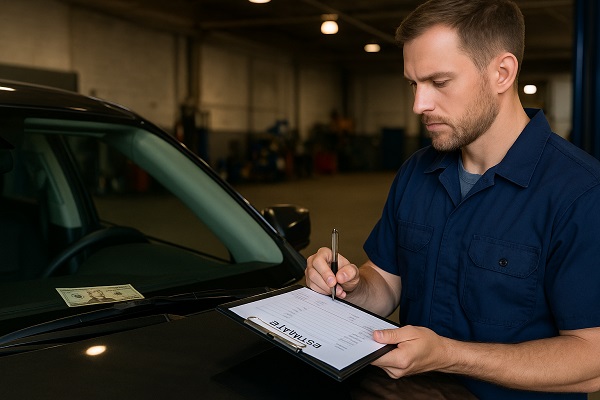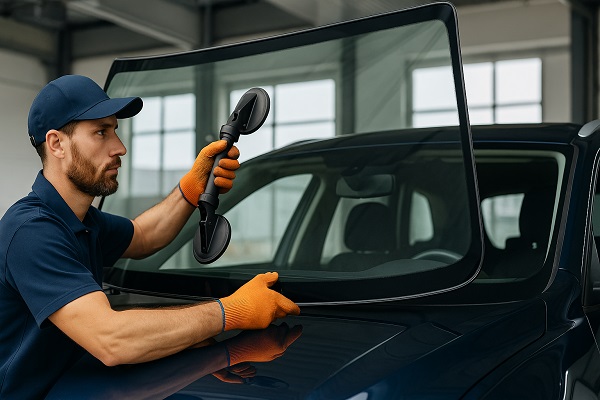When car owners face windshield damage, a common question arises: can a windshield be transferred between vehicles? While it may seem logical to reuse glass from another car, the reality is more complicated. Windshields are designed with precision, and transferring them is rarely straightforward. Below, we’ll explore the technical, safety, and financial factors you should consider before attempting such a swap.
Why Windshields Are Not Easily Interchangeable
Windshields are not one-size-fits-all components. Each one is engineered to fit the dimensions, curvature, and structural requirements of a specific make and model.
- Custom Fit: Automakers design windshields to fit perfectly into a car’s frame. Even a small mismatch in size can compromise the seal and structural integrity.
- Safety Features: Many modern vehicles have advanced driver assistance systems (ADAS), such as lane departure warnings and automatic braking, which rely on sensors and cameras embedded in the windshield.
- Different Curvatures: The curve of the glass affects how it fits into the car body. Even if two vehicles look similar, their windshields may differ in curvature and thickness.
Situations Where a Windshield Might Be Transferable
Although rare, there are cases where transferring a windshield is possible.
- Identical Make, Model, and Year: If the vehicles are the same model and year, and have identical trim levels, the windshield may be transferable.
- Classic Cars: In some older vehicles without sensors or advanced features, the windshield design may be simple enough to allow reuse.
- OEM Replacement Parts: If the windshield was originally purchased as an Original Equipment Manufacturer (OEM) part, it may fit multiple vehicles of the same generation.
Risks of Transferring a Windshield

Even if the windshield seems like it will fit, there are risks involved.
Safety Concerns
Windshields are a structural component of your car. A poor fit or improper installation could cause:
- Reduced roof support in rollover accidents.
- Increased risk of ejection during a collision.
- Improper deployment of airbags, since windshields help direct airbag inflation.
Potential for Leaks
An imperfect seal can lead to:
- Water leaks during rain.
- Increased cabin noise.
- Mold and rust development over time.
Sensor and Calibration Issues
For newer vehicles, transferring a windshield may disrupt safety systems:
- ADAS cameras may not align properly.
- Lane-keeping and collision avoidance systems may malfunction.
- Recalibration costs could outweigh any savings from reusing glass.
The Process of Removing and Reinstalling a Windshield
If you do attempt to transfer a windshield, the process involves multiple steps, each with challenges.
- Careful Removal – Specialized tools are required to cut through the adhesive without cracking the glass.
- Inspection – The glass must be checked for chips, scratches, or stress cracks that could worsen.
- Cleaning and Preparation – Old adhesive must be removed from both the glass and vehicle frame.
- Resealing – A fresh bead of automotive-grade adhesive is applied.
- Curing – The adhesive needs time to cure to achieve a secure bond.
A mistake at any step could render the windshield unsafe or unusable.
Alternatives to Transferring a Windshield
For most drivers, alternatives are more practical than attempting a transfer.
Professional Replacement
Hiring a certified technician ensures proper installation and calibration of sensors.
Insurance Coverage
Many insurance policies cover windshield replacement, sometimes with no deductible.
Repair Instead of Replacement
If the damage is limited to small chips or cracks under six inches, a professional repair may restore the windshield without full replacement.
Cost Considerations

At first glance, transferring a windshield might seem cost-effective, but when you factor in labor, risk, and potential repairs, it may not save money.
- Removal Costs: Skilled labor is required to avoid breaking the glass.
- Installation Costs: Proper resealing and calibration are essential.
- Possible Wastage: If the windshield cracks during removal, you’ll still need to buy a new one.
- Long-Term Risks: A poorly fitted windshield could cause leaks or safety issues that result in costly repairs later.
Legal and Insurance Implications
Some states have strict vehicle safety regulations, and an improperly installed windshield could cause your car to fail inspection. Additionally, insurance companies may refuse coverage if a reused windshield contributes to damage in an accident.
Key Takeaways for Vehicle Owners
When asking whether a windshield can be transferred between vehicles, keep these points in mind:
- Windshields are tailored for specific vehicle models.
- Transfer is only possible in rare cases where vehicles are identical.
- Safety risks, legal concerns, and hidden costs usually outweigh the benefits.
- Professional replacement is the safest, most reliable option.
A windshield is more than just a piece of glass—it’s a critical safety component. While transferring one between vehicles may sound like a money-saving solution, it often leads to greater risks and expenses. In most cases, investing in a proper replacement from a certified installer will provide peace of mind, preserve your vehicle’s safety systems, and ensure compliance with the law.
Content reviewed and published by SLP AutoGlass Editorial Team.

